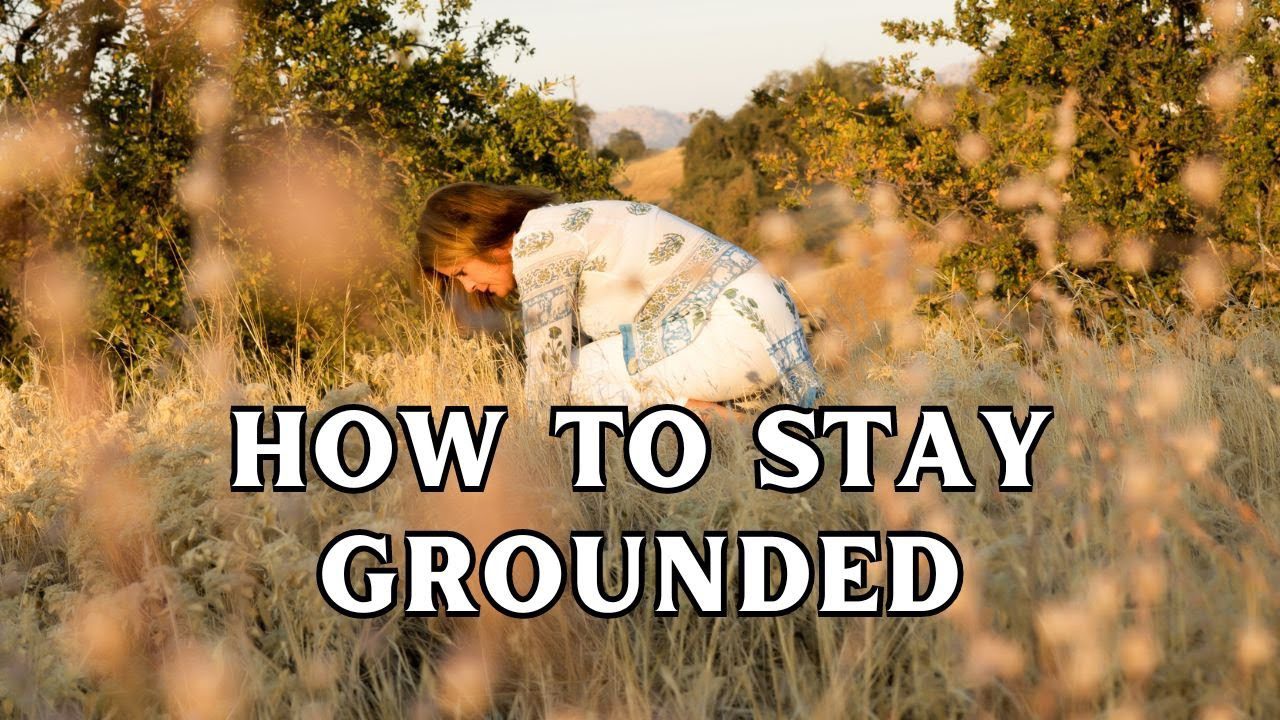In today’s fast-paced world, it’s easy to get overwhelmed. Between constant notifications, social pressures, and the race to keep up, staying connected to the present moment—and ourselves—can feel like a challenge. That’s where the concept of staying grounded becomes essential. But what does it mean to be grounded? And more importantly, how can you achieve it in a way that truly supports your mind, body, and spirit?
Let’s explore the right way to stay grounded through psychological understanding, spiritual practices, daily habits, and nature-based techniques.
What Does It Mean to Stay Grounded?
To be “grounded” means to be mentally and emotionally stable, aware, and connected to reality. It’s the ability to remain calm, centred, and present, even when life gets stressful or chaotic. Being grounded helps you make thoughtful decisions, relate better to others, and handle emotions more effectively.
Psychologists often associate groundedness with emotional regulation, self-awareness, and resilience (Brown & Ryan, 2003). It’s not about ignoring problems or emotions, but facing them with clarity and calmness.
Why Is Being Grounded Important?
Staying grounded is more than just a feel-good idea—it has real benefits for your mental and physical health. Studies show that people who regularly engage in grounding practices experience reduced anxiety, improved focus, lower cortisol levels, and better sleep quality (Chevalier et al., 2012).
When you’re grounded:
- You’re less reactive to stress.
- You think more clearly.
- Your relationships are healthier.
- You’re more in touch with your values and goals.
In essence, grounding gives you inner strength to face life as it is, not as you fear it to be.
1. Psychological Techniques to Stay Grounded
Mental grounding techniques help shift your attention away from anxious thoughts and back to the present. Here are a few widely used methods:
The 5-4-3-2-1 Technique
This is a powerful sensory exercise used in therapy:
- 5 things you can see
- 4 things you can touch
- 3 things you can hear
- 2 things you can smell
- 1 thing you can taste
This method helps anchor your awareness in the physical world and calm racing thoughts.
Mindfulness and Meditation
Mindfulness involves paying attention to your thoughts and surroundings without judgment. According to research by Kabat-Zinn (1990), mindfulness reduces stress, improves attention, and increases emotional well-being. Even just five minutes a day can make a difference.
2. Spiritual Practices for Grounding
Groundedness is also a major theme in spiritual traditions. Whether you’re religious or simply seeking inner peace, these practices can help:
Prayer and Reflection
Prayer is a way to release burdens and refocus your mind. It brings stillness and helps you connect with a higher purpose. Daily reflection on your actions and intentions can also foster self-awareness and balance.
Chakra Grounding (Root Chakra)
In Eastern traditions, the root chakra (Muladhara) is responsible for feelings of safety and groundedness. Meditation, red-colored foods, and physical movement can help balance this energy centre (Judith, 2004).
Breathing Exercises
Conscious breathing is at the core of yoga, meditation, and many spiritual practices. Try inhaling for 4 seconds, holding for 4, and exhaling for 4. This simple practice can reduce anxiety and reconnect you with your body.
3. Practical Daily Habits That Ground You
Staying grounded doesn’t require grand gestures. Simple, everyday choices can make a big difference:
Create a Daily Routine
Routines bring structure and predictability, which can be grounding during chaotic times. Start your day with intention—whether that’s making your bed, journaling, or stretching.
Digital Detox
Excessive screen time, especially social media, can make us feel disconnected. Try taking regular breaks from your devices. Even a short walk without your phone can help you reconnect with the real world.
Gratitude Practice
Gratitude shifts your focus from what’s missing to what’s present. Keeping a gratitude journal, or simply naming three things you’re thankful for each day, fosters a sense of grounding and contentment (Emmons & McCullough, 2003).
4. Nature and Physical Grounding
One of the most effective ways to stay grounded is to reconnect with the earth—literally.
Earthing or Grounding Therapy
This involves direct contact with the earth, such as walking barefoot on grass or sand. Studies have shown that earthing reduces inflammation, improves sleep, and supports overall wellness (Chevalier et al., 2012).
Gardening and Outdoor Activities
Spending time in nature calms the nervous system. Activities like gardening, hiking, or even just sitting under a tree can bring profound feelings of peace and clarity.
Movement and Exercise
Physical movement helps release pent-up energy and anchors you in the present. Whether it’s yoga, tai chi, walking, or dancing, regular exercise boosts your mood and keeps you grounded in your body.
5. Social Connections and Grounding
Human beings are inherently social. Meaningful relationships provide a sense of belonging and emotional stability.
Talk to a Trusted Friend
Sometimes, grounding comes through honest conversation. Sharing your worries or joys with someone you trust can reduce anxiety and make you feel supported.
Community and Service
Helping others is one of the most powerful ways to get out of your own head. Volunteering or contributing to a community effort can remind you of your values and purpose.
6. When You Feel Ungrounded: Quick Grounding Tips
Here are a few quick tricks when you feel overwhelmed or “in your head”:
- Splash cold water on your face.
- Hold an object and focus on its texture.
- Count backwards from 100 by sevens.
- Take slow, deep breaths and repeat a calming phrase.
- Name five things you can see in the room.
These strategies work fast and can be done anywhere.
Conclusion: The Path to a Grounded Life
Staying grounded isn’t a one-time fix—it’s a lifelong practice. It requires tuning in, slowing down, and being honest with yourself. Whether you ground through spirituality, psychology, nature, or relationships, the goal is the same: to live a life that’s stable, present, and connected.
As you explore these techniques, remember there’s no “perfect” way to stay grounded. What matters is finding what works for you—and making it a regular part of your life.
The Best Approach to Manage Screen Time
References
- Brown, K. W., & Ryan, R. M. (2003). The benefits of being present: Mindfulness and its role in psychological well-being. Journal of Personality and Social Psychology, 84(4), 822.
- Chevalier, G., Sinatra, S. T., Oschman, J. L., Delany, R. M. (2012). Earthing: Health implications of reconnecting the human body to the Earth’s surface electrons. Journal of Environmental and Public Health, 2012.
- Emmons, R. A., & McCullough, M. E. (2003). Counting blessings versus burdens: An experimental investigation of gratitude and subjective well-being in daily life. Journal of Personality and Social Psychology, 84(2), 377–389.
- Kabat-Zinn, J. (1990). Full Catastrophe Living: Using the Wisdom of Your Body and Mind to Face Stress, Pain, and Illness. New York: Dell Publishing.
- Judith, A. (2004). Wheels of Life: A User’s Guide to the Chakra System. Llewellyn Publications.

